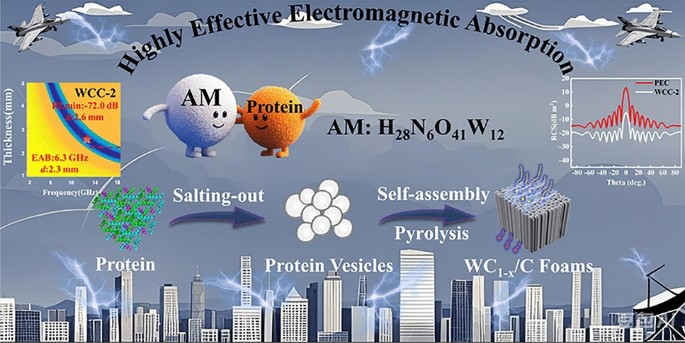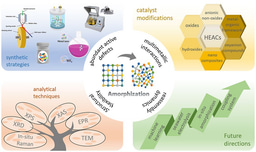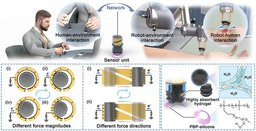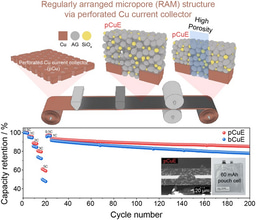Directional Three‑Dimensional Macroporous Carbon Foams Decorated with WC1−x Nanoparticles Derived from Salting‑Out Protein Assemblies for Highly Effective Electromagnetic Absorption

As electromagnetic (EM) pollution intensifies worldwide, developing high-performance EM wave absorbing materials (EWAMs) becomes critical. Researchers from Harbin Institute of Technology, led by Prof. Yunchen Du, have proposed a groundbreaking strategy to fabricate directional 3D macroporous carbon foams decorated with WC1-x nanoparticles via salting-out protein assemblies from egg white. This work pioneers a simple yet scalable route to construct anisotropic carbon-based EWAMs without relying on conventional unidirectional freezing techniques.
Why This Matters
- Eco-Friendly & Scalable: Utilizes discarded egg white as raw material, avoiding complex and energy-intensive freezing processes.
- Directional Pore Channels: Enhances impedance matching and EM wave attenuation when waves propagate parallel to the channels.
- Superior EM Performance: Achieves a minimum reflection loss of −72.0 dB and an effective absorption bandwidth of 6.3 GHz, outperforming most biomass-derived EWAMs.
Innovative Design and Features
- Salting-Out Self-Assembly: Electrostatic interaction between egg white protein and ammonium metatungstate (AM) drives the formation of vesicles, which assemble into directional flakes after centrifugation.
- In-Situ WC1-x Formation: During pyrolysis, AM converts into uniformly dispersed WC1-x nanoparticles (<10 nm) on carbon flakes, creating abundant heterogeneous interfaces.
- Tunable Composition: WC1-x content (21.5–49.9 wt%) is easily controlled by adjusting AM dosage, enabling precise optimization of EM properties.
- Anisotropic Macropores: Pore size (1–7 μm) and alignment are retained after pyrolysis, facilitating multiple reflections and extending EM wave propagation paths.
Applications and Future Outlook
- Radar Stealth: CST simulations confirm a 13.6 dB m2 average RCS reduction, demonstrating excellent stealth performance across −90° to 90° incident angles.
- Chip Anti-Interference: COMSOL modeling shows WCC-2 coating reduces EM leakage from 5.0 to <2.0 V m-1, protecting sensitive electronics.
- Challenge & Next Step: Current foam size is centimeter-scale; future work will scale up dimensions and refine pore structure control for industrial applications.
This study offers a low-cost, green, and scalable pathway to advanced EWAMs, bridging biomass valorization with next-generation EM protection. Stay tuned for more innovations from Prof. Yunchen Du’s team at HIT!
Follow the Topic
-
Nano-Micro Letters

Nano-Micro Letters is a peer-reviewed, international, interdisciplinary and open-access journal that focus on science, experiments, engineering, technologies and applications of nano- or microscale structure and system in physics, chemistry, biology, material science, and pharmacy.






Please sign in or register for FREE
If you are a registered user on Research Communities by Springer Nature, please sign in